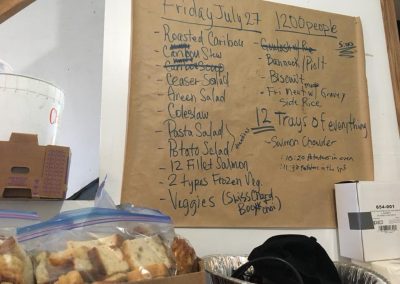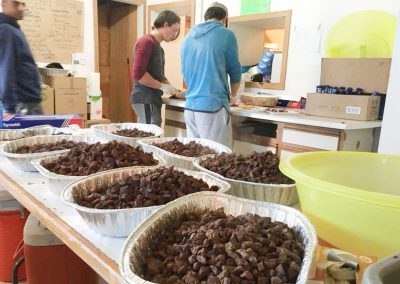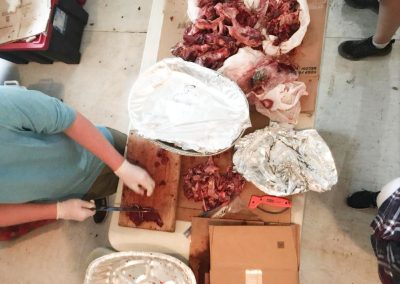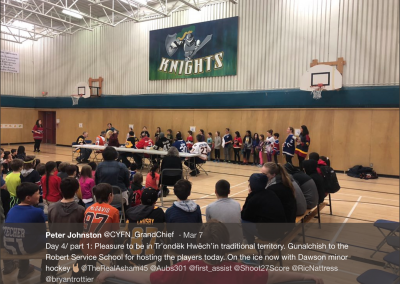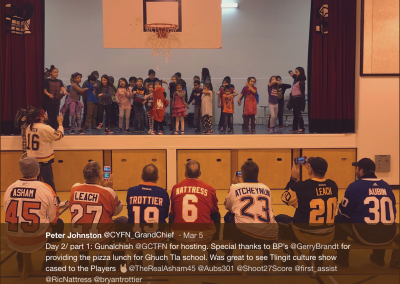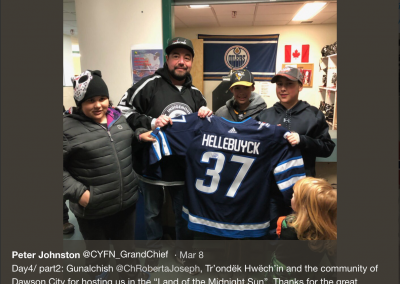Melding politics with First Nations arts in Yukon
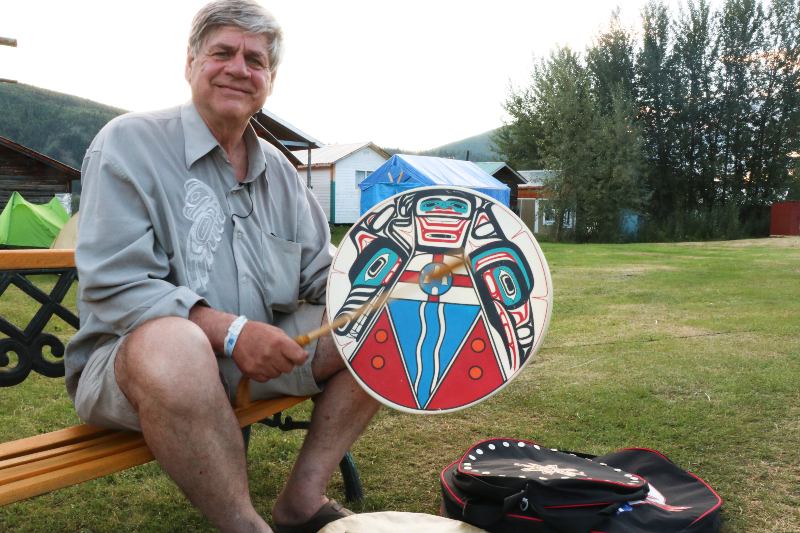
Larry Bagnell, MP for Yukon Territory, says, “Most of the people from the Yukon who come here know me, they see me. I’ve volunteered in the kitchen for the last few Moosehide Festivals, and I have my two drums that I play sometimes.” Bagnell plays on two First Nations drums: one is a regular drum, and the other is a stick-gambling drum. [Photo © Jennifer Liu]
With insights from 15 years as Member of Parliament for all of Yukon Territory, Larry Bagnell is not alone when he says Canadians are unclear about the Territories. According to Maclean’s Magazine, 86 per cent of Canadians will never set foot in Canada’s north.
Unbeknownst to many outside the territory, First Nations communities in Yukon have been quietly building back their culture.
Yukon Territory is a hotspot for arts and culture festivals during the summer. Its capital, Whitehorse, is the most-populated city in the three territories. By car, it is reachable to all but one of the 14 Yukon First Nations groups.
Over the last decades, Indigenous artists have been drawing on their traditions to rebuild their cultural identities, nearly lost to the residential school system. There is a sense of purpose and pride in their art and their performances.
It’s a cause for continued celebration. Bagnell motions to the surroundings on the Moosehide Gathering grounds. He has watched the community infrastructure grow over the years.
“When I first started, you could go and you could see a little cabin like one of these,” Bagnell gestures behind him at the structures where Tr’ondëk Hwëch’in residents live year-round. “And there might be a band manager in there and that might be all you saw of a First Nation. Now they have huge First Nation bureaucracies of professionals running their own affairs, so there’s lots of jobs for them. And they’re not being run by someone way off in Ottawa: they’re running their own affairs, and it’s made a huge success in the progress of those First Nations.”

Grand Chief Peter Johnston sits in the highest First Nations position in Yukon Territory. He is a member of Teslin Tlingit Council. The Grand Chief is optimistic that more and more, Yukon First Nations are bringing artistic currents to the discussions about reconciliation. [Photo courtesy of Shakat Journal]
The Grand Chief of the Council of Yukon First Nations speaks to the evolution of inter-collaboration between government systems. This four-tier infrastructure is unique to Yukon, where the municipal, territorial, federal and First Nations governments.
“We’d always just been on the receiving end, rather than being in the same room,” Peter Johnston says of how far the dialogue has come. He says this evolved from Yukon self-government victories, specifically upon the ratification of the Umbrella Final Agreement in 1993. “Just having the ability to make decisions on behalf of our people is very important, rather than having other levels of government saying, ‘this is what’s best for you.’”
“We as nations need to be progressive,” Johnston says. “There’s so many opportunities for us today to evolve, to bring things such as our culture and language to the forefront.” He is optimistic about a better future for Yukon First Nations groups currently under his watch. “Whatever we want for our future generations is unlimited. It’s just up to us to ensure that we don’t lose sight of that – whether it’s for each individual nation or person.”
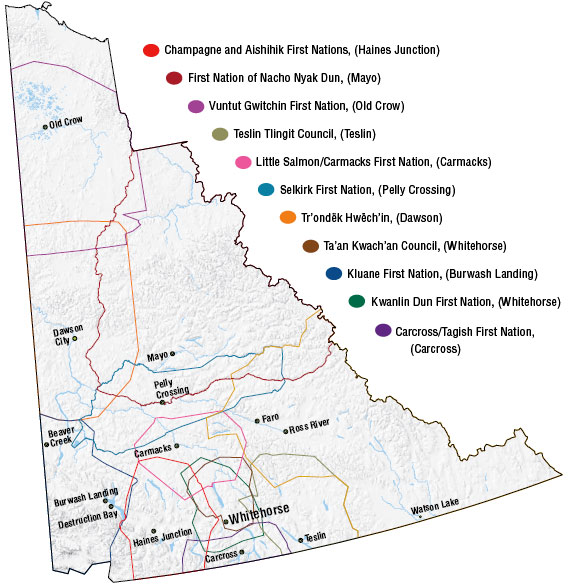
A map of Yukon First Nation territories throughout Yukon. [Image courtesy of Indigenous and Northern Affairs Canada]
In this vision, the Grand Chief says the media play a joint, “crucial” role in telling Yukon First Nations stories. “It’s important to tell the First Nations story, to ensure that the story that’s being told is correct – not being skewed or marginalized.”
Finally, Johnston says that culture provides an important piece of the reconciliation puzzle. “[It’s about] celebrating, feasting, dances, ceremonies; but also having some fun,” Johnston says. Beyond taking a political approach to service delivery, “we have to take the time to celebrate not only our achievements of the year, but also celebrate our time together as First Nation people.” He travels to communities to participate in ceremonies, attend cultural festivals, hold policy meetings with other chiefs – most recently, he accompanied a delegation of NHL alumni of Indigenous heritage throughout the territory as they visited young First Nations hockey teams. “We’ve really tried to make things fun – not only just business.”
“In Ottawa, from across the country — people don’t know a lot about the north.”
In the Moosehide Gathering kitchen
At dinner, guests numbered 1,200 on the Friday of three-day celebrations at last summer’s Moosehide Gathering. [Photos © Jennifer Liu]
Indigenous NHL alumni tour the Yukon
The Grand Chief of the Council of Yukon First Nations, Peter Johnston, accompanied a delegation of NHL alumni of Indigenous heritage on a wintertime tour. Their outreach extended to First Nations youth throughout Yukon. [Photos courtesy of Council of Yukon First Nations]
The Grand Chief of the Council of Yukon First Nations, Peter Johnston, accompanied a delegation of NHL alumni of Indigenous heritage on a wintertime tour. Their outreach extended to First Nations youth throughout Yukon. [Photos courtesy of Council of Yukon First Nations]
